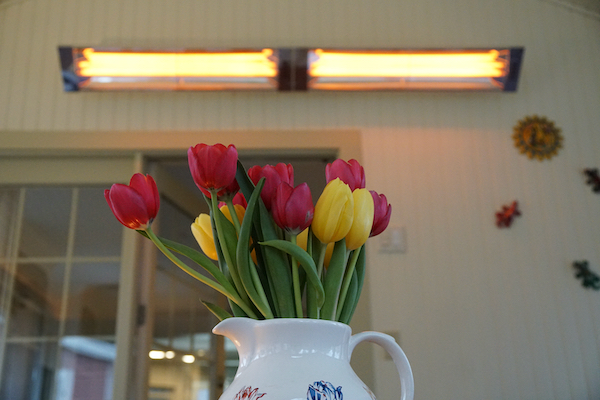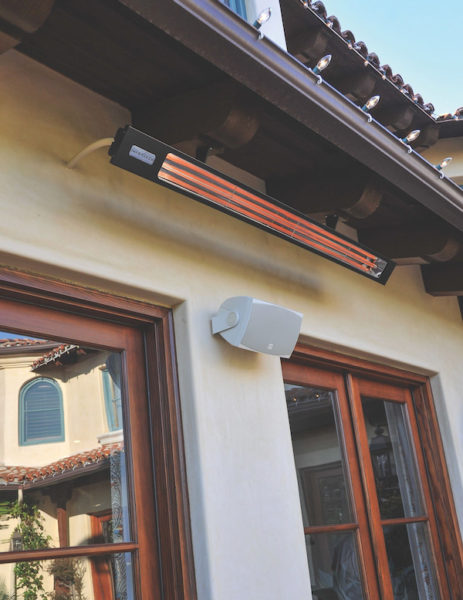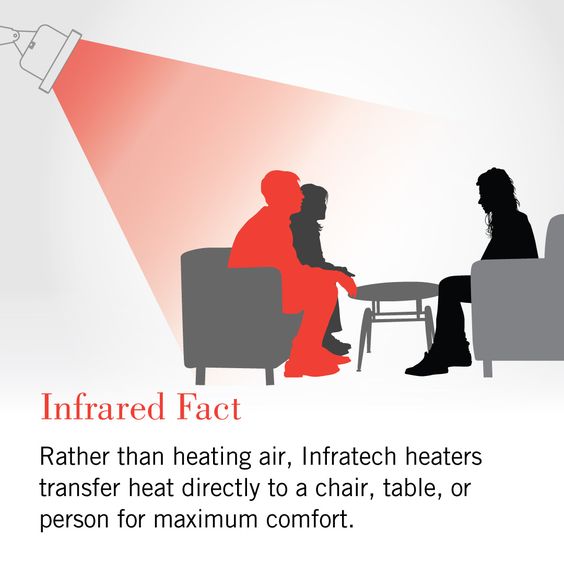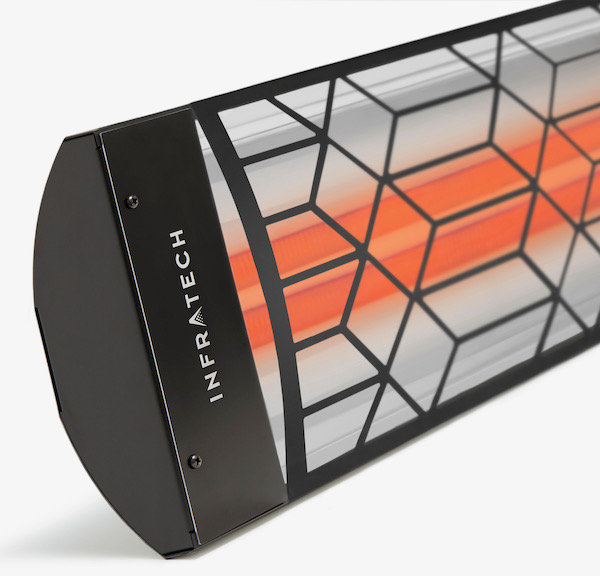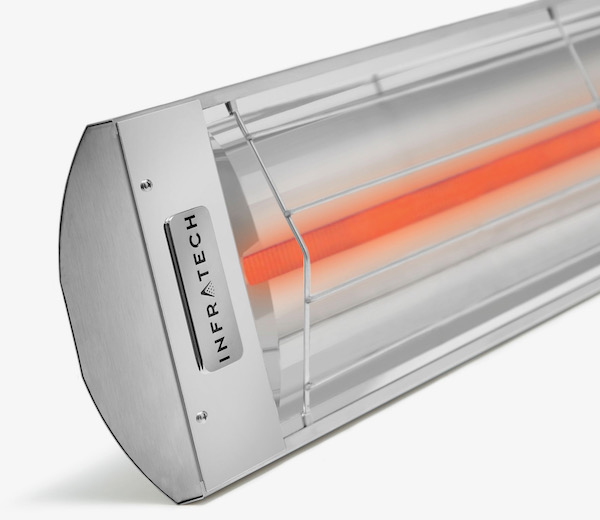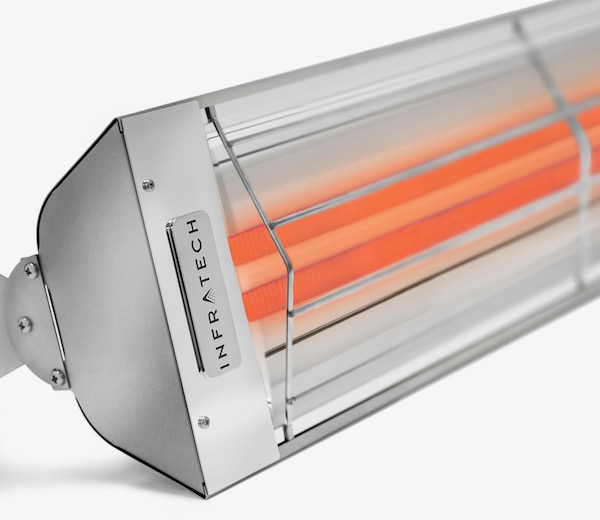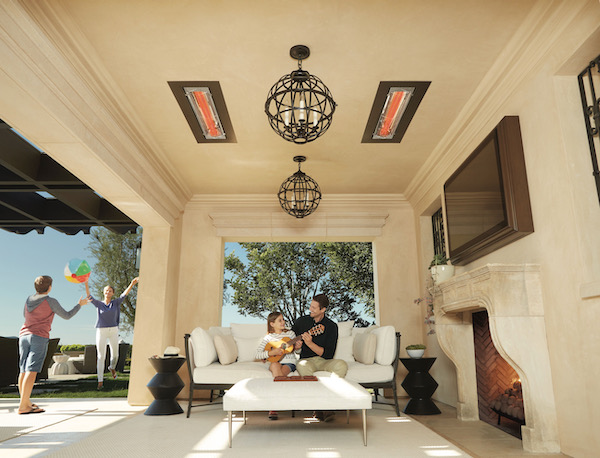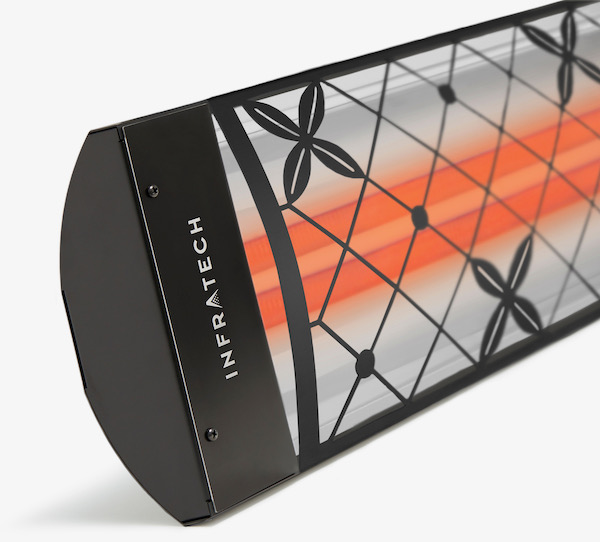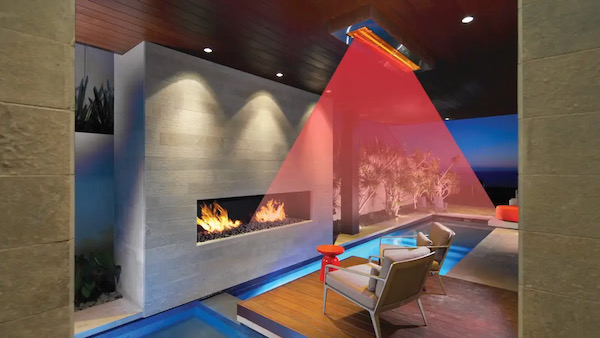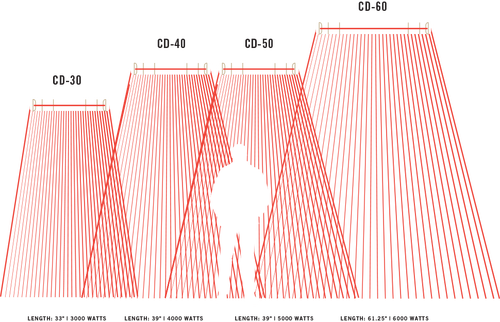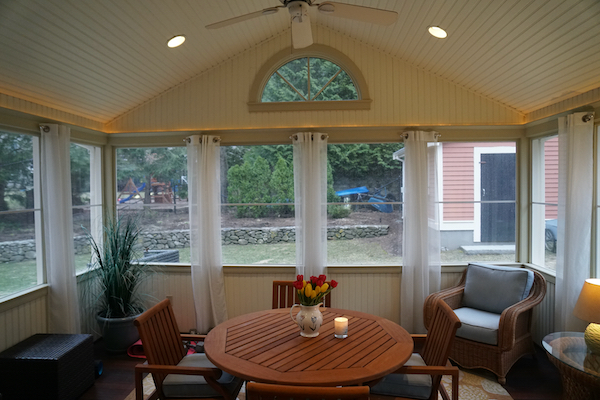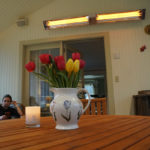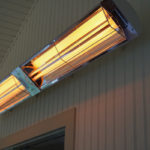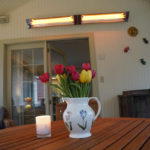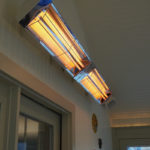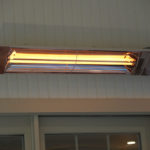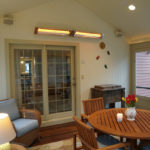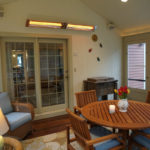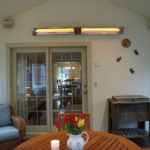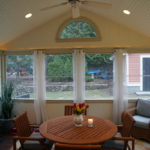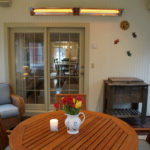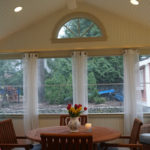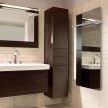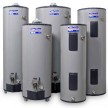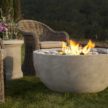Choosing A Patio Infrared Heater
Adding An Infrared Heater To A Screen Porch
When the weather turns cold, folks who have been living on their screened porches move indoors. I designed my screened porch so I could swap out my screens for Mylar wind panels. While this helps cut the wind, it’s still cold. The only true way to be able to enjoy this porch year-round is to add heat. The million-dollar questions are:
- What type of heat? And
- How to do it safely?
In this article, I’ll cover choosing an infrared heater.
Outdoor Living – Beyond the Summer Months
If you are a homeowner hoping to enjoy the comfort of your screened porch long into the colder months, a more efficient and economical solution may be to install electric infrared heaters.
READ: Creating an Outdoor Living Space
What Are Infrared Heaters and How Do They Work?
Infrared heaters transfer heat to objects and people, rather than heating the air. Heated quartz elements within these heaters emit rays that are absorbed by other items, evenly distributing heat to surroundings. Infrared heaters have three things going for them:
-
Efficient Heating
While traditional heaters are rendered ineffective by drafty conditions, infrared heaters emit radiant energy that won’t be blown away in the wind. For this reason, infrared heat is one of the most effective ways to heat a screened porch, patio, or any other setting where warmth cannot be contained and re-circulated.
-
No Emissions
Unlike gas heaters and fireplaces, infrared heaters do not emit carbon monoxide
-
Cost-effective
Infrared heaters convert 93 percent of energy into heat, making them both cost-effective and energy-efficient.
Choosing the Right Infrared Heater
Before installing an infrared heating system on your screened porch, there are several factors to consider.
Size
If your screened porch is relatively tiny, a small, single-element heater may be all you need. But if your space is larger, you may want to consider installing a larger-dual element model or more than one heater.
Number of Heaters
A single heater can typically provide heat for a 10×10-foot radius, but to heat larger spaces, multiple heaters may be necessary.
Location
Install your infrared heaters above or around seating areas where people will be sitting.
We Chose Infratech Heaters
We decided to use Infratech brand heaters based on their reputation, safety features, aesthetics, and the fact that they are manufactured in Southern California.
Infratech heaters are a recognized name in the heating industry. Their heaters use infrared heat in the form of shortwave or mediumwave radiation. An Infratech heater uses an element in a quartz tube, which is different than a gas heater, which uses an open flame. Because you don’t have to worry about an open flame, infrared heaters require less clearance around them for safety. This means they can often be placed in tighter quarters and can be mounted flush in a ceiling to reduce visual impact.
This makes Infratech effective in both enclosed and open-air outdoor living spaces because you don’t have to worry about trapping and recirculating the air once it’s been heated. Infratech heating elements are rated for 5,000 hours of continuous use.
Heating Objects Versus Heating the Air
Infrared heaters don’t heat the air. They heat the objects at which they are pointed. This direct heat transfer is fundamentally different than other heating unit methods. This is why Infratech heaters are feasible in open-air settings. You’re not trying to heat the air; you’re heating the actual seating areas and objects instead.
 Infratech Heater System Components
Infratech Heater System Components
Once you’ve chosen your product, there are other components that can be included in your project, depending on size and budget.
- Value Control [$120] Used to control one, single-element heater.
- Duplex Switch Simple switch to control two heaters at ½ heat or full heat.
- Relay box Control options for your heating system range from simple on- and off-switches to advanced solid-state control systems and custom controllers.
- Custom Controls [$2,000] Custom-made controls offer dimmer switches, giving you the full range of output regulation—from 0 to 100 percent, and zoning.
- Universal Panel [$1,500-2000] This option includes smartphone and voice controls. A universal panel can control up to 8 heaters and can be connected with Bluetooth, Alexa, and Lutron interfaces.
- Home Management Systems Infratech is currently the only heater that can connect to home smart systems. [Lutron / Creston / Control 4]
- Timer It’s important to include a timer in your system to ensure you don’t leave the heater on by mistake, wasting energy and money.
- Circuit Each individual heater will require its own large circuit, so if there’s not enough room in your circuit box, you may need to install a dedicated circuit.
Infratech Color Options
Infratech’s heaters and flush-mount frames are available in a brushed stainless steel finish, along with the six (6) standard color options:
- White
- Almond
- Beige
- Biscuit
- Bronze
- Black
- Grey
- Copper
These Standard Colors are powder coated over the stainless steel and baked to achieve a long-lasting, fade- and corrosion-resistant finish. Infratech also offers custom finish colors which can add 3-4 weeks to delivery.
Infratech Decorative Heating Element Covers
Four decorative covers are offered as an option to cover the heating element, called the Motif Collection:
- Contemporary
- Craftsman
- Traditional
- Mediterranean
Infratech Mounting Options
When choosing an infrared heater consider mounting options, Infratech offers three choices:
- Flush [most popular – flush mount in ceiling]
- Wall [wall mount brackets]
- Pole [8-foot pole with 12” x 12” heavy base.
- Ceiling Mounted (Mounting Brackets included in heaters)
Smart Home Controlling
Infratech heaters can be controlled from home management systems. There are two ways to integrate Infratech’s solid-state controls into your home management system. One permits on/off and timer functionality only, by switching the 120-volt power to the analog remote. The second way allows for full integration with Infratech’s controls designed to accept a 0-10-volt DC signal from the home management system, to vary the intensity of the heaters.
Cost to Install
The total cost of purchasing and installing an infrared heating system for your screened porch will typically be around $1000 to 1600 per heater, depending on where you live and electrician costs. The overall cost may be affected if you need to upgrade your circuit box or repair drywall for the project. To figure out your cost use this formula:
Placement of Heater
One Infratech heater heats an area approximately ten feet in radius. Infratech offers engineering help to potential clients. Send your photos, plans, and dimensions to them and they will provide you with options on heaters, colors, and controls.
When considering heater placement always choose a heater size with the appropriate heat output for the mounting height and area to cover. By selecting a smaller unit, you may require more heaters to get the same amount of heat output. Screen porch or patio heating is often a compromise between functionality and finding the desired look.
Infratech vs. a Gas Heater
Infratech heaters use elements within quartz tubes, while gas heating systems use open flames.
An Infratech heater can even be mounted flush within walls or ceilings, and tend to be smaller than gas units. Gas units need that clearance to safely operate, which means they often hang down or stick out further into the room or area.
Wind diminishes a gas heater’s efficiency and the effectiveness of the heater. An Infratech heater is unaffected by wind.
Cost to Run an Infratech Heater
At 4000-watts, an Infratech heater will cost [according to National Ave] $0.60 an hour to run at 93% efficiency. In comparison, propane costs $ 2.00 an hour to run and gas $0.45 an hour but runs at 60% effective due to the heat rising and lost efficiency — even in windless conditions.
How Much Heat to Expect?
At their Food Services Testing Center, Pacific Gas & Electric has determined that a good patio heat installation (gas or electric) will provide between 3-7° of perceived heat at 60° F ambient conditions. Test results determined that more than 7° is too warm to sit in for extended periods. Colder or draftier areas may require more heat; protected or warmer areas may require less.
How I Used The Infratech Heating System
I wanted to add heat to my 14’x14’ cathedral ceiling, screened porch. I eliminated any wind issues by installing Mylar storm panels. Using the rule of thumb of one heater heats a 10’x10’ area, I chose to install two heaters on an end wall nine feet high. Both heaters face outward and are controlled by a Duplex switch, allowing me to individually operate my two heaters on ½ heat, or high heat, or a combination of both. My electrician and I installed the units.
Pro Tip: When choosing an infrared heater consider personal expectations and wind exposure when choosing to go with one or more heaters. If in doubt, go higher in heater wattage, choose a dual element over a single element heater or increase the number of heaters used, and then “dial down” the heat with a controller.
Overall Thoughts on the Infratech Heaters
Overall, I’ve been impressed with the Infratech heaters. When choosing an Infratech infrared heater remember that they’re an efficient way to heat and the most cost-effective in the long term. To summarize: Infrared heaters are silent, provide efficient heating, odorless, do not require propane or gas, are low maintenance, and are easy and convenient to operate.
Infratech heaters can be purchased online or from a distributor in your area.




